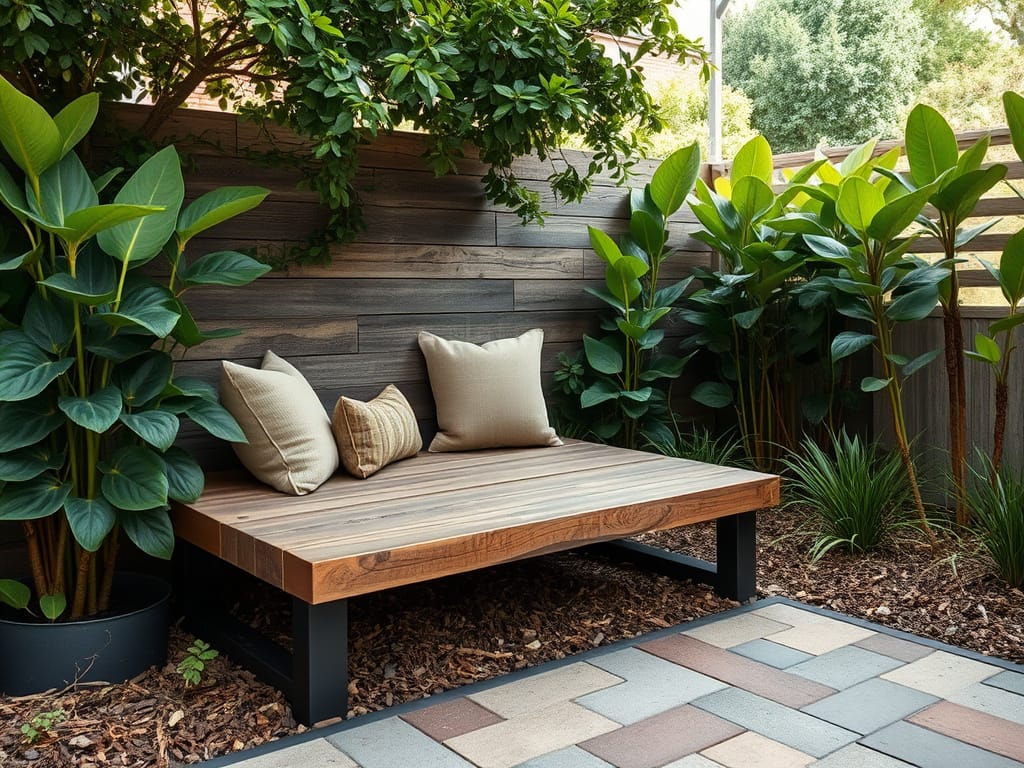I remember the first time I tackled mobile home landscaping — I stared at bare ground, flimsy skirting, and a yard that begged for something better. Would rocks last? Could I skip endless mowing? Could my home finally feel like it belonged?
Here’s what I learned: with simple plans, the right materials, and a bit of elbow grease, you can give any mobile home a serious curb appeal boost without turning it into a money pit.
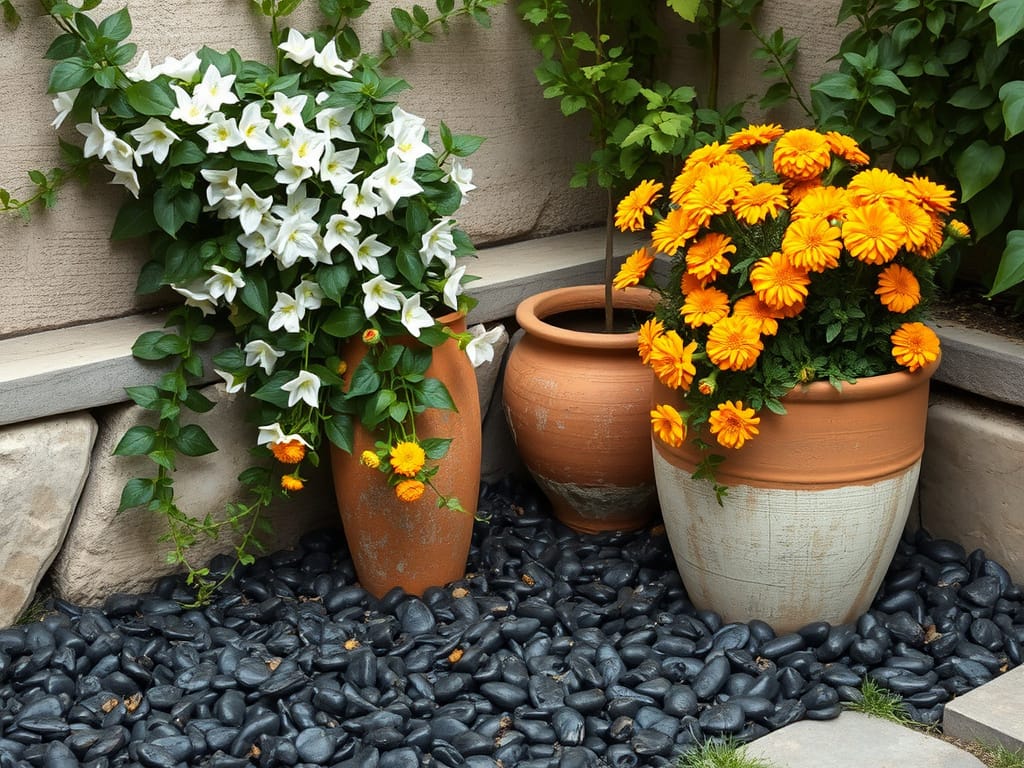

Key Takeaways
| What to Know | Why You’ll Love It |
|---|---|
| Sketch a plan first | Avoid costly mistakes and save time |
| Upgrade mobile home skirting | Boosts insulation and hides under-home gaps |
| Use landscaping rocks + mulch | Cuts watering, stops weeds, and trims mowing chores |
| Pick low-maintenance plants | Keeps your weekend free while still looking lush |
| DIY hardscape zones | Extends living space affordably |
Why Mobile Home Landscaping Matters
I get it—mobile homes don’t always come with manicured lawns. But a well-thought-out yard:
- Raises value if you ever sell
- Feels more permanent when skirting and plants blend seamlessly
- Gives you outdoor “rooms” for chilling, grilling, or working on hobbies
When I added a simple gravel strip, my guests started treating my yard like an extension of my living room. That’s the power of smart mobile home landscaping.
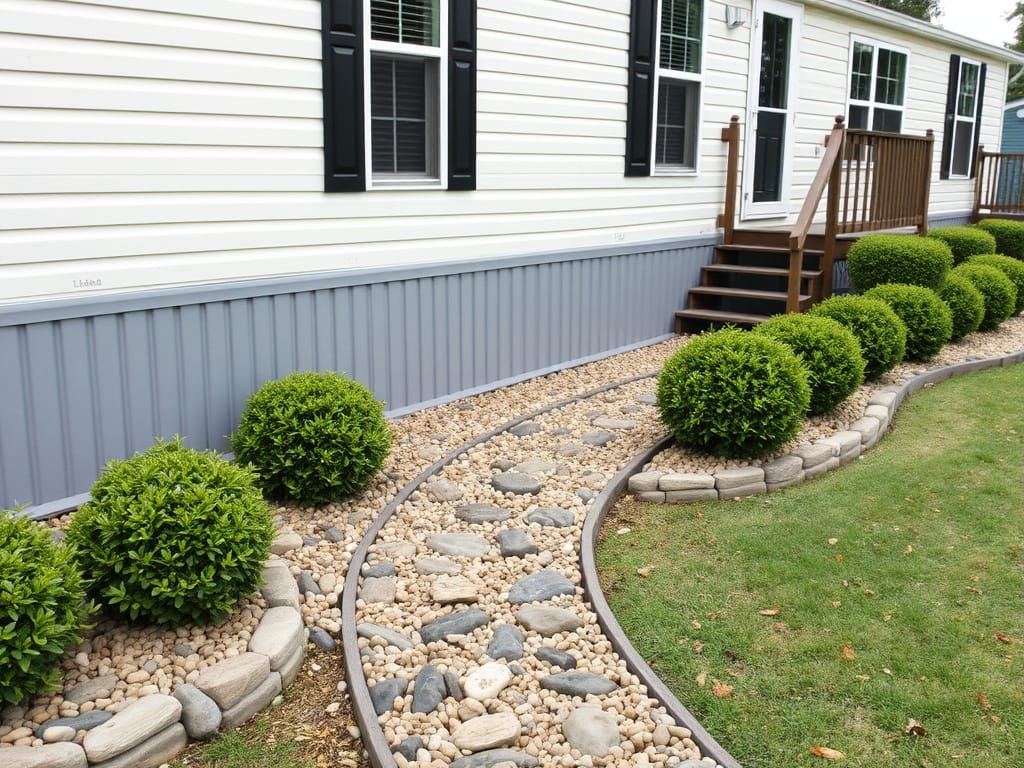
Planning Your Mobile Home Landscaping Project
Jumping straight in is tempting, but a quick sketch or simple mock-up can save hours of frustration. Here’s how I stay on track:
- Measure & Map – I walk the perimeter with a tape, then sketch it on graph paper or snap a screenshot from my phone and draw over it.
- Sun & Shade – Notice where the sun blazes at noon and where shade kicks in late afternoon. That guides plant placement.
- Set Zones – Think “patio here,” “mulch bed there,” “skirting upgrade over there.” Zoning keeps you organized.
- Check Drainage – Water should flow away from your foundation. I added a slight slope under my rock beds to avoid puddles.
Pro Tip: I save snapshots of plant ideas and hardscape photos on my phone. Having visual goals keeps motivation high.
Mobile Home Skirting: Practical Tips & Styles
Mobile home skirting doesn’t have to look tin-can cheap. Upgrading skirting:
- Hides crawlspace and pests
- Adds insulation to cut drafts under your floor
- Gives a finished look that feels custom
Popular Skirting Options
- Vinyl Panels – Inexpensive, easy to clean, but can crack in extreme cold.
- Metal Sheets – Durable, painted or galvanized, stands up to impact.
- Faux Stone or Brick – Looks high-end, resists weather, pricier but worth the drama.
- Lattice Wood – Warm, semi-open for airflow, needs stain or paint every few years.
When I switched to vinyl skirting with vented panels, I stopped hearing critters under the house—plus it takes me five minutes to hose off dirt.
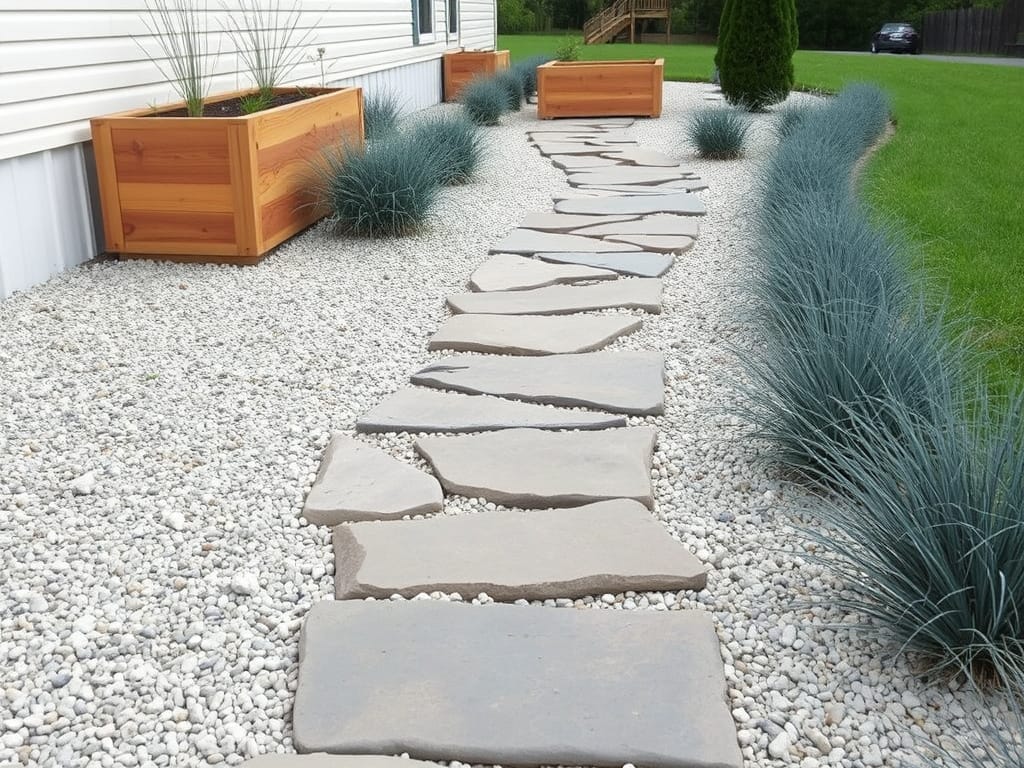
Low Maintenance Front Yard Landscaping Ideas with Rocks & Mulch
If you crave neat curb appeal without endless chores, focus on low maintenance front yard landscaping ideas with rocks and mulch. Here’s what worked for me:
- Mulch Beds – Lay 2–3 inches of bark mulch around shrubs and annuals.
- Decorative Gravel – Use pea gravel or crushed granite under a drip line.
- Weed Barrier Fabric – A cheap layer under rocks stops weeds from sprouting.
- Potted Arrangements – Group planters of succulents and ornamental grasses on your porch.
Bold Hack: Combine two colors of rock—dark gray and tan—to draw the eye without needing plants everywhere.
These methods cut my watering needs by at least half and keep grass from sprouting where I don’t want it.
Using Landscaping Rocks to Cut Maintenance
Rocks aren’t just pretty—they’re workhorses. I swapped part of my lawn for a rock garden:
- River Rock Borders – Smooth stones outline beds and pathways.
- Crushed Granite Paths – Affordable, locks together underfoot, drains well.
- Boulder Accents – A few big stones anchor the look and need zero upkeep.
Installation Steps:
- Clear turf and weeds.
- Grade the area for a slight slope away from your home.
- Lay landscape fabric—overlap edges by 6 inches.
- Spread rocks 2–3 inches deep.
- Compact lightly with a hand tamper or roller.
My biggest “aha” moment: rocks don’t need mowing, edging, or feeding. Once they’re down, you’re mostly done.
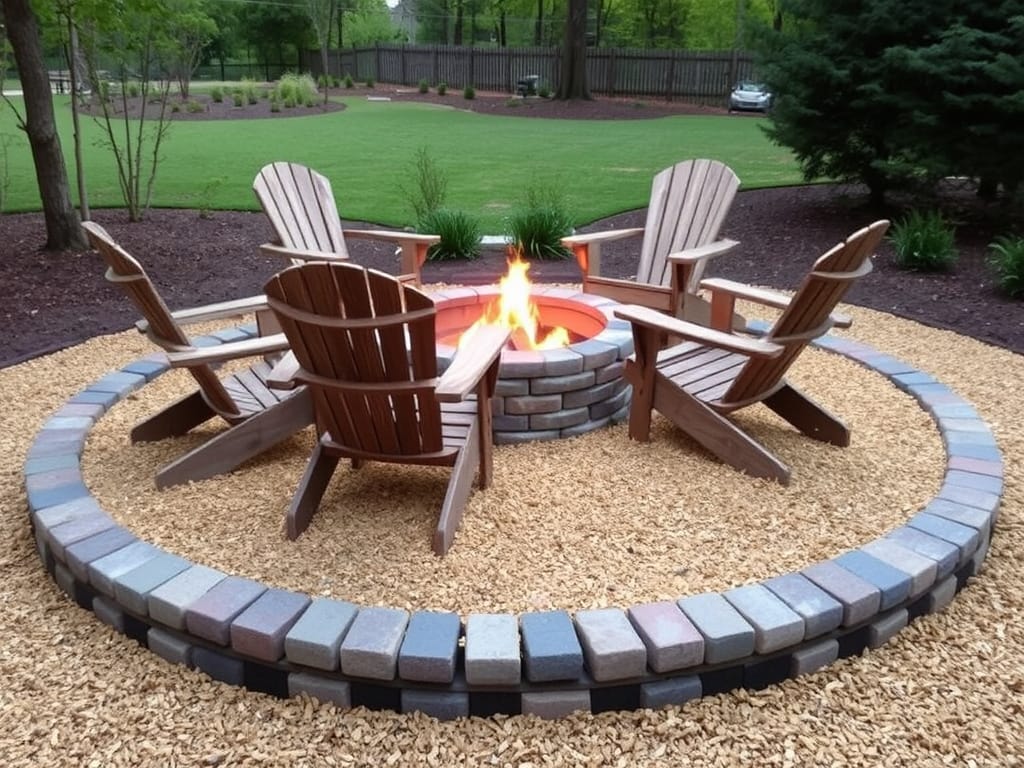
Budget-Friendly Mobile Home Landscaping on a Dime
You don’t need a designer budget. I saved hundreds with these tricks:
- Recycled Bricks & Pavers – Check Craigslist or Habitat for Humanity Restore for cheap scores.
- Tree Stump Planters – Drill holes, fill with potting mix, and plant flowers right in the wood.
- Pallet Furniture – Pallets make quick benches, tables, or vertical garden frames.
- Local Stone Yards – Many sell rock “seconds” at giant discounts—ask what’s leftover.
My Favorite DIY Story: I built a five-step entry with leftover pavers and free lumber scraps, saving me over $250 vs. pre-built kits.
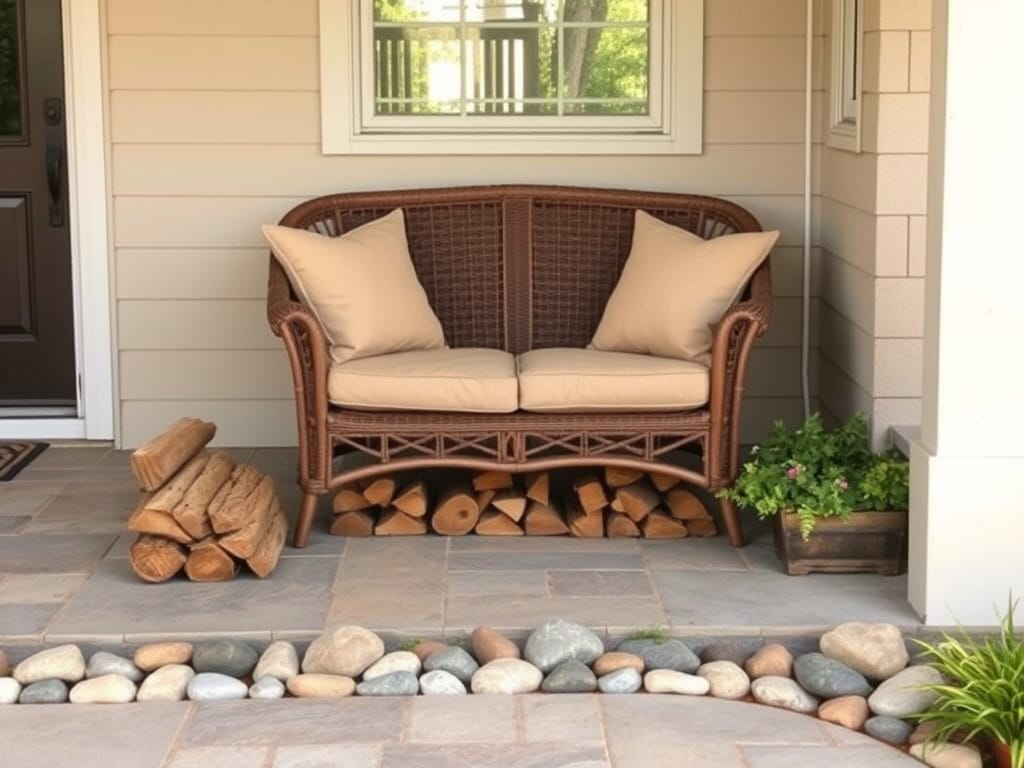
DIY Hardscaping Ideas: Paths, Patios & More
Hardscaping defines zones and ups your outdoor “oomph.” Try:
- Stepping Stone Path
- Place stones 18–24 inches apart for a natural walk.
- Sand gaps with pea gravel or moss for a finished look.
- Gravel Patio
- Frame with 4×4 timbers, fill with crushed granite, compact tight.
- Top with an outdoor rug and seating—instant hangout spot.
- Fire Pit Ring
- Stack paver rings or use a steel insert—creates a focal point.
- Surround with gravel or flagstone for safety.
After adding a small patio off my side door, I found myself outside every evening—reading, grilling, even working on my laptop.
Plant Picks That Thrive Around Mobile Homes
Choosing the right plants matters when you want low maintenance front yard landscaping:
- Evergreen Shrubs – Boxwood, holly, and dwarf yews keep year-round green.
- Ornamental Grasses – Feather reed grass and fountain grass need trimming once a year.
- Perennials – Coneflowers, black-eyed Susans, and lavender bloom without replanting.
- Succulents – Agave and sedum hold up under rocky beds and barely need water.
Planting Tips:
- Group plants by water needs—easier to irrigate.
- Leave 18–24 inches between shrubs so you avoid aggressive root crowding.
- Use a balanced slow-release fertilizer at planting, then forget it.
My drip system on a timer waters those zones for 10 minutes each morning while I’m still in bed.
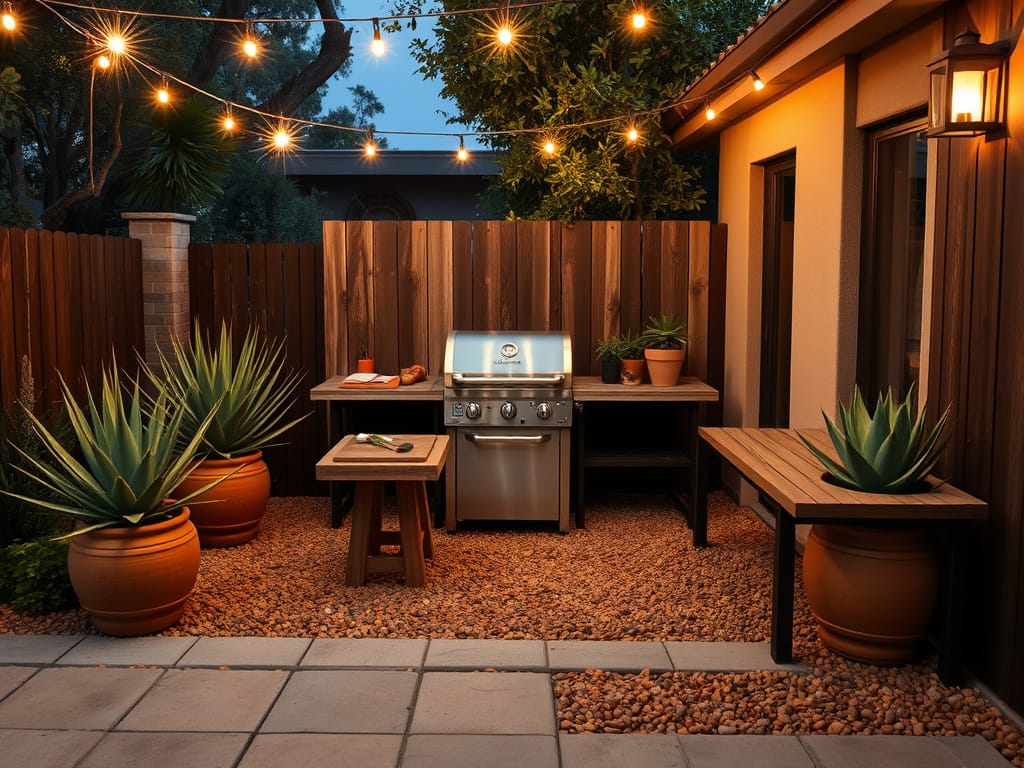
Seasonal Care Tips for Low Maintenance Front Yard
Keeping your yard looking sharp all year is about small check-ins:
- Spring – Rake debris, refresh mulch, and test irrigation drip lines.
- Summer – Monitor moisture; top off rock beds if soil washes out.
- Fall – Trim perennials, cut back ornamental grasses to 4–6 inches.
- Winter – Sweep pathways, clear snow off skirting vents, check for ice dams.
A 5-minute seasonal walk around your home can prevent big headaches—like blocked vents or weed explosions.
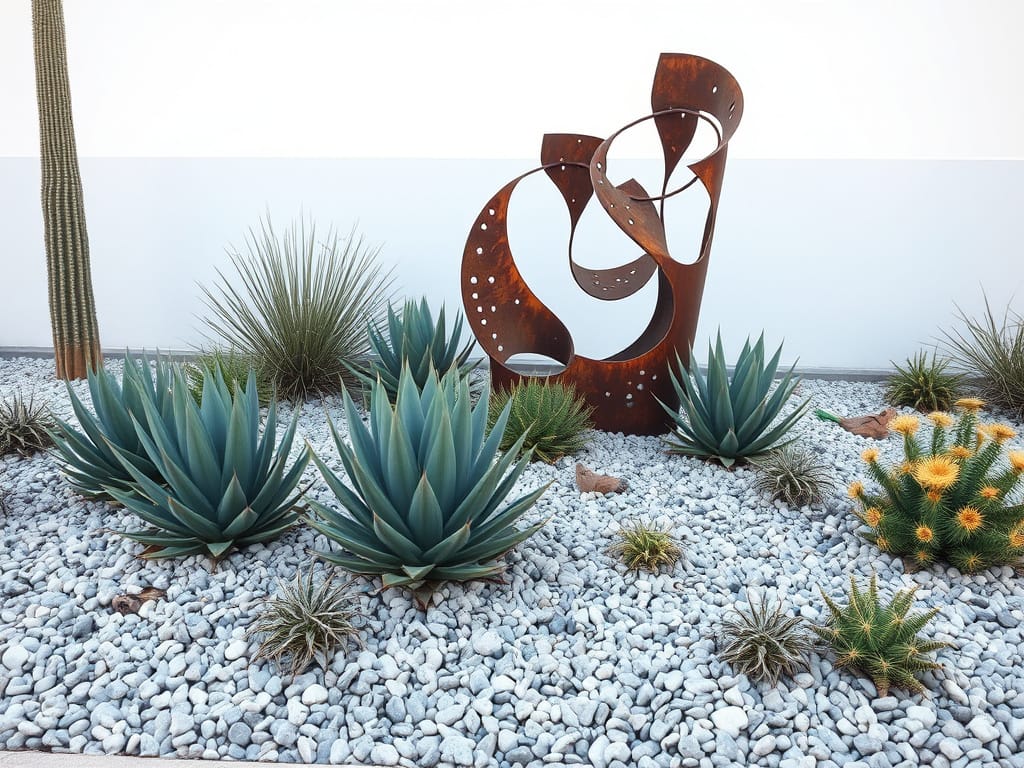
Putting It All Together for Mobile Home Landscaping
When I tackle a yard project now, I:
- Pick One Zone – Front entry, side yard, or back corner.
- Set a Budget – $100 for rocks, $50 for mulch, $0 for DIY wood projects.
- Gather Materials – Weed fabric, rocks, mulch, plants, skirting panels.
- Schedule Work – Break it into weekends or two-hour evenings.
- Enjoy & Adjust – After the first month, I swap one plant or move a rock features if it feels off.
Slow progress beats overwhelm. Each small win keeps me excited.
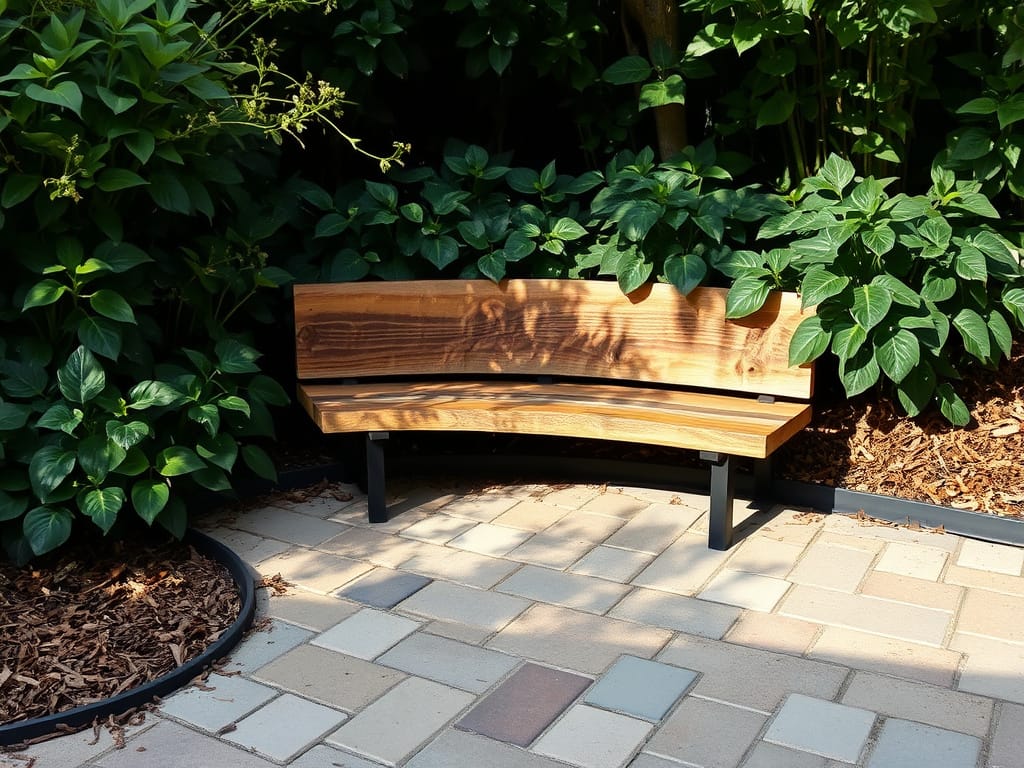
FAQs About Mobile Home Landscaping
Q: What’s the easiest ground cover under rocks?
A: Pea gravel or crushed granite works best. At 2–3 inches deep, it blocks weeds and drains well.
Q: How tall should mobile home skirting be?
A: Aim for 12–18 inches above ground—enough to hide pipes and deter critters, but short enough to vent air.
Q: Can I install skirting myself?
A: Yes. Measure carefully, cut panels to fit, and secure with screws or clips. A partner helps for long runs.
Q: How much rock do I need for a 10×10 foot area?
A: For 2 inches of depth, you need roughly 0.6 cubic yards—about 1,200 pounds of pea gravel.
Q: Will mulch fade over time?
A: Organic mulch does gray out after one season. Refresh with a fresh 2-inch layer each spring for best color.
I’ve walked you through everything I’ve learned on mobile home landscaping—from skirting tips to gravel beds, low-maintenance plants, and DIY hardscaping. Now it’s your turn to build a yard that feels like home and frees up your weekends. mobile home landscaping
